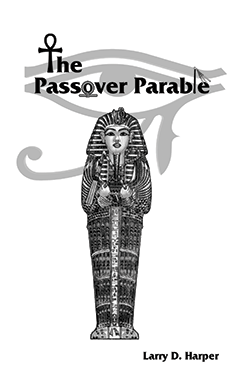The Prophets Spoke in Parables to Reveal and Conceal
The Scriptures make it clear that one of the reasons why Jesus spoke in parables was to conceal the Mystery of the Word of God from those who had not been “granted” the right to understand those mysteries while revealing it to those who had been “granted” that right:
And the disciples came and said to Him, “Why do You speak to them in parables?” And He answered and said to them, “To you it has been granted to know the mysteries of the kingdom of heaven, but to them it has not been granted. For whoever has, to him shall {more} be given, and he shall have an abundance; but whoever does not have, even what he has shall be taken away from him. Therefore I speak to them in parables; because while seeing they do not see, and while hearing they do not hear, nor do they understand.”
(Matthew 13:10–13) —NASB
And His disciples {began} questioning Him as to what this parable might be. And He said, “To you it has been granted to know the mysteries of the kingdom of God, but to the rest {it is} in parables, in order that seeing they may not see, and hearing they may not understand.”
(Luke 8:9–10) —NASB
Jesus’ point is, most of us have the physical eyes and ears necessary to see and hear things in the physical world, but only a few have been “granted” the spiritual eyes and ears needed to apprehend the meaning and significance of the parables of Scripture which unlock the Mystery of the Word of God that Moses and the other Prophets of Israel concealed in their writings.
Few Will Be “Granted” Insight
The key to understanding the parables of Scripture resides in the Hebrew Scriptures, where Moses and the Prophets of Israel concealed the meaning and significance of their prophecies behind parables—which are themselves comprised of parabolic images and Hebrew idioms. Unless one is “granted” insight into The Teaching of Moses and the writings of all the other Prophets of Israel, the Mystery of the Scriptures—which is the Truth of the Word of God—remains hidden behind the parabolic statements made by the Prophets of Israel.
Further evidence of the fact that Moses and all the other Prophets of Israel used parables to conceal the Truth of the Word of God is evident in this passage, where Matthew explains what Christ was doing in His Own day by quoting the Prophet who wrote Psalm 78:
“I will open my mouth in parables;
I will utter things hidden since the foundation of the world.”
(Matthew 13:35b) —NASB
There can be no doubt that Jesus and the Prophets of Israel spoke in parables, at least in part, to conceal the Truth of the Word of God from those who have no interest in the Truth. But they also spoke in parables to reveal the Truth to those who are willing to listen, to learn, and to believe the Truth concerning the Mystery of the Word of God. Those who have an honest desire to learn will be “granted” insight into the meaning and significance of the parables they hear, as was the case with Jesus’ disciples who, unlike the unbelieving Pharisees, were given a private explanation of Christ’s parables:
And with many such parables He was speaking the word to them as they were able to hear it; and He did not speak to them without a parable; but He was explaining everything privately to His own disciples.
(Mark 4:33–34) —NASB
Related Information

God Lives in a Three-Story House
This is the third in a series of articles that explain the nature and purpose of the Hebrew Scriptures. It builds on information presented in the January, April, and July 1997 issues and explains the purpose Ezra had in mind when he wrote the two Books of Chronicles. It discloses how cleverly Ezra concealed his actual purpose in writing by allowing the uninformed reader to believe his primary interest was the Temple in Jerusalem rather than “The House” of God.

Why Leave Any Room for Proud Protestants or Pious Pontification?
This is the second article in a two-part series whose purpose is to show Early Church leaders clearly understood the Prophets concealed the meaning of what they wrote behind parabolic imagery. It continues the discussion begun in the April 2000 issue by commenting on excerpts taken from the next two books of Irenæus’ monumental work “Against Heresies.” He again confirms he knew the meaning of the Scriptures had been concealed.

Glory Be! What’s That I See?
This is the third in a series of articles that explain the meaning of Jesus’ parables in terms of the parabolic imagery and Hebrew idioms the Prophets used. The first two articles appeared in the April and October 1998 issues. This article investigates the parabolic imagery the Prophets use to describe God’s “harvest” at the End of the Age.

The Passover Parable
Jesus said the writings of Moses, the Prophets, and the Psalms—that is, the entirety of the Hebrew Scriptures—are all about Him (Luke 24:27, 44; John 5:46). Yet few today can find any reference to Jesus Christ in the Hebrew Scriptures because they don’t understand that God has used parables since the time of Moses to speak concerning His Son. The Passover Parable is at the heart of God’s message concerning His Firstborn Son, Jesus Christ. That message can be seen in the carefully orchestrated parabolic pantomime that God directed Corporate Israel, His Firstborn Son (Ex. 4:22), to enact during the Exodus of the sons of Israel from Egypt.
The Truth is Available
Check Out the Online Library
Browse through our library of eBooks and newsletters—absolutely free!
Start Reading Now